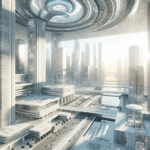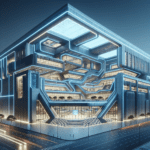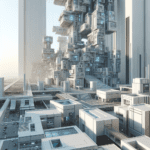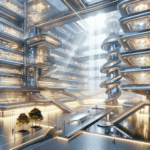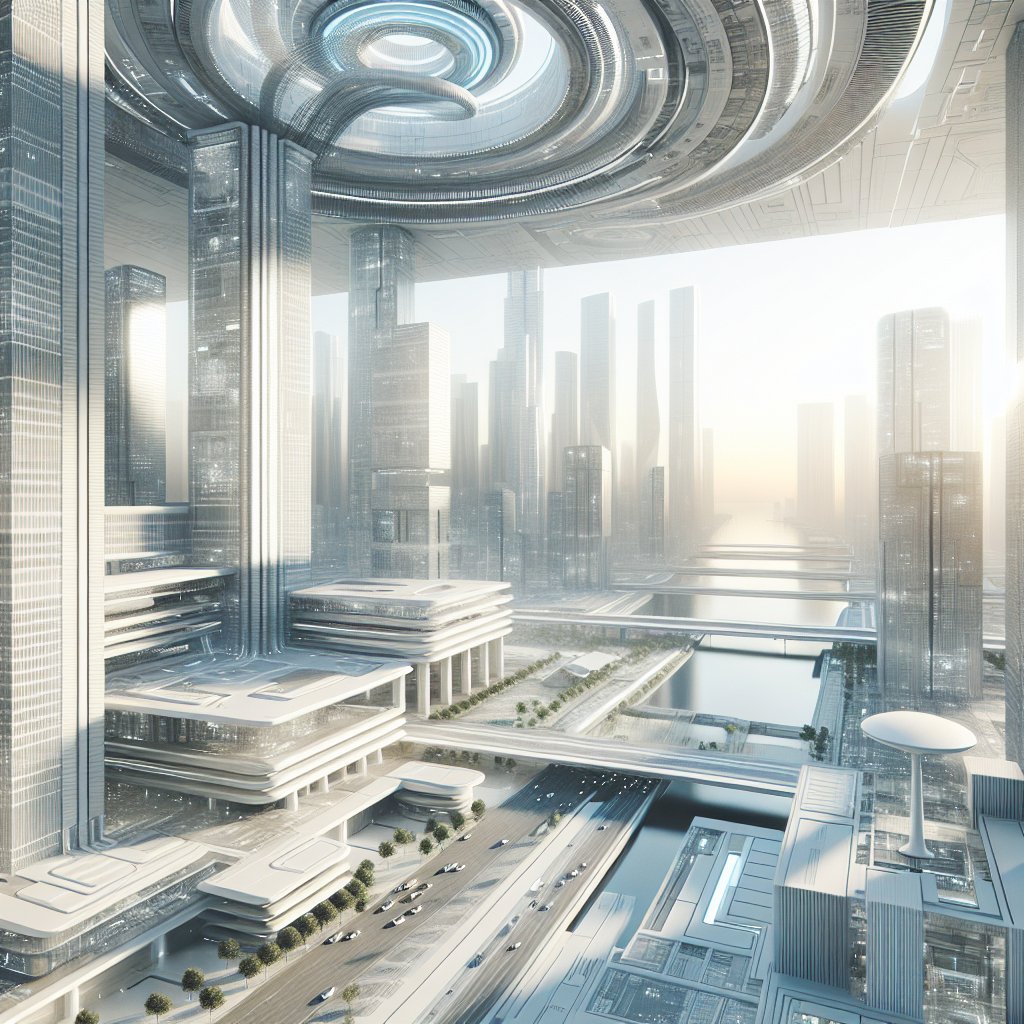As we look towards the future of architecture, the concept of self-healing concrete and other groundbreaking innovations are set to revolutionize the way we design and construct buildings. These advancements not only promise to enhance the durability and sustainability of structures but also aim to redefine the relationship between architecture and the environment.
The Rise of Self-Healing Concrete
One of the most promising innovations in futuristic architecture is the development of self-healing concrete. This material is designed to address one of the most persistent issues in construction: the deterioration of concrete over time. Traditional concrete, while strong and versatile, is prone to cracking due to environmental stressors such as temperature fluctuations, moisture, and chemical exposure. These cracks can lead to significant structural damage if not addressed promptly.
Self-healing concrete incorporates special additives, such as bacteria or microcapsules filled with healing agents, that activate when cracks form. These additives work to fill the cracks and restore the material’s integrity, effectively extending the lifespan of the structure. The use of self-healing concrete not only reduces maintenance costs but also minimizes the environmental impact associated with frequent repairs and replacements.
Research and development in this field have shown promising results, with several prototypes and pilot projects demonstrating the effectiveness of self-healing concrete. As the technology matures, it is expected to become a standard material in the construction industry, paving the way for more resilient and sustainable buildings.
Other Innovations Shaping Futuristic Architecture
Beyond self-healing concrete, a myriad of other innovations are poised to transform the architectural landscape. These include advancements in materials, construction techniques, and design philosophies that prioritize sustainability, efficiency, and adaptability.
Smart Materials
Smart materials are at the forefront of architectural innovation, offering dynamic properties that respond to environmental changes. These materials can alter their shape, color, or thermal properties in response to external stimuli, such as light, temperature, or pressure. For instance, thermochromic glass can change its tint based on the intensity of sunlight, reducing the need for artificial cooling and enhancing energy efficiency.
Another example is shape-memory alloys, which can return to a predetermined shape when exposed to specific conditions. These materials have potential applications in adaptive building facades that can optimize natural light and ventilation, contributing to a building’s overall energy performance.
3D Printing and Modular Construction
The advent of 3D printing technology has opened new possibilities in construction, allowing for the rapid and cost-effective production of complex architectural elements. This technology enables architects to experiment with intricate designs that were previously difficult or impossible to achieve using traditional methods. Additionally, 3D printing reduces material waste and shortens construction timelines, making it an attractive option for sustainable building practices.
Modular construction is another trend gaining traction in the industry. This approach involves the prefabrication of building components in a controlled factory environment, which are then transported to the construction site for assembly. Modular construction offers numerous benefits, including improved quality control, reduced construction time, and enhanced flexibility in design. It also supports the creation of adaptable spaces that can be easily reconfigured to meet changing needs.
Biophilic Design
Biophilic design is an architectural philosophy that seeks to integrate nature into the built environment, promoting the well-being of occupants and enhancing the connection between humans and nature. This approach incorporates natural elements such as greenery, water features, and natural light into building designs, creating spaces that are both aesthetically pleasing and conducive to health and productivity.
Incorporating biophilic elements into architecture not only improves the quality of indoor environments but also contributes to the sustainability of buildings. Green roofs and living walls, for example, provide natural insulation, reduce urban heat island effects, and support biodiversity in urban areas.
The Future of Architecture: A Sustainable Vision
The innovations in futuristic architecture, from self-healing concrete to biophilic design, reflect a broader shift towards sustainability and resilience in the built environment. As architects and engineers continue to explore new materials and technologies, the potential for creating buildings that are not only functional but also harmonious with their surroundings becomes increasingly attainable.
Looking ahead, the integration of these innovations will likely lead to a new era of architecture that prioritizes environmental stewardship, resource efficiency, and human well-being. By embracing these advancements, we can create a built environment that not only meets the needs of today but also anticipates the challenges of tomorrow.
In conclusion, the future of architecture is bright, with self-healing concrete and other innovations paving the way for more sustainable, resilient, and adaptive buildings. As these technologies continue to evolve, they hold the promise of transforming our cities and communities into thriving, sustainable ecosystems that benefit both people and the planet.
